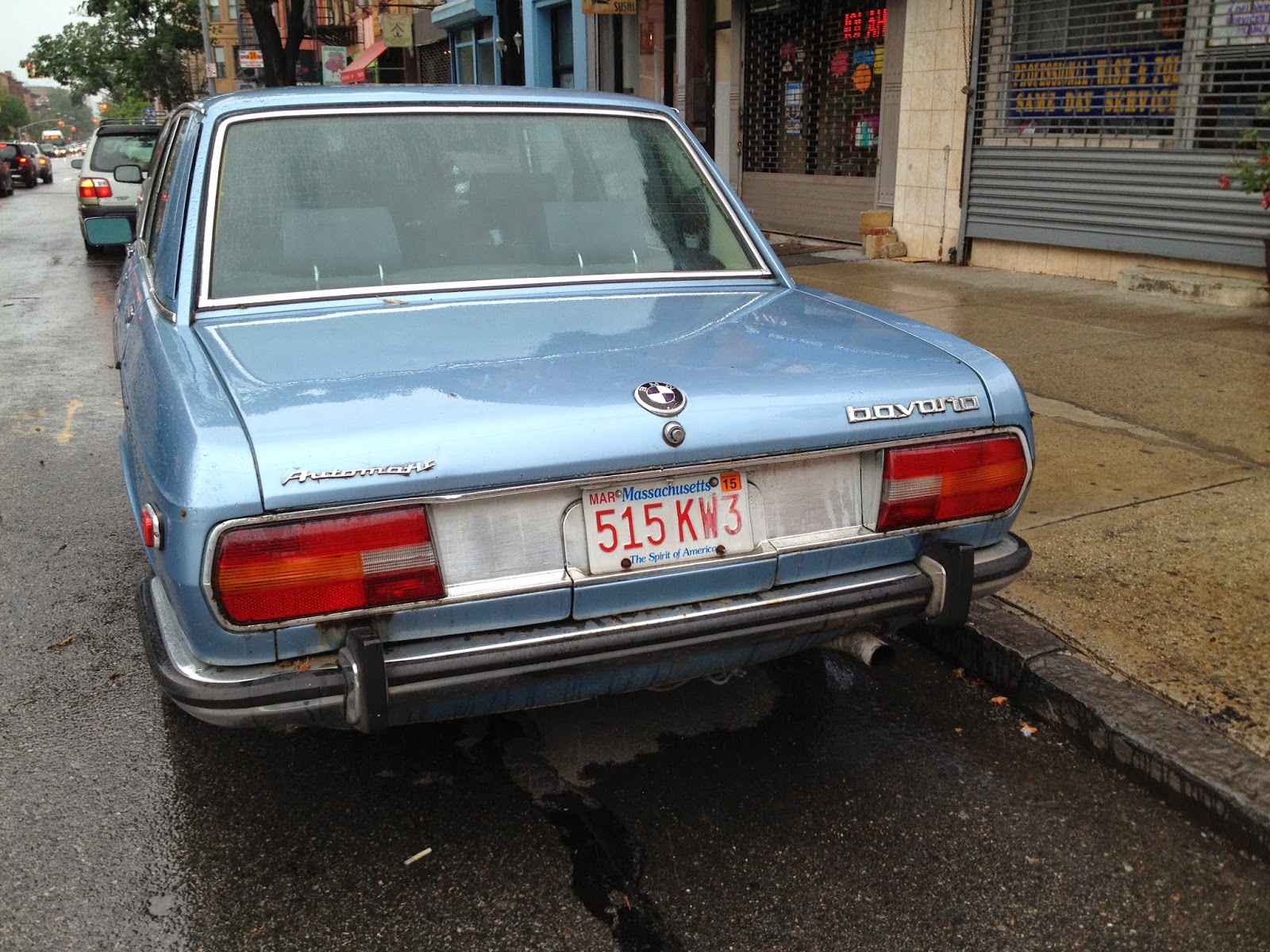bavaria
Look at this funky schnoz leaning forward in close-talker fashion! Chrome middle section and four eyes can only mean one thing; An early '70s BMW E3, specifically the bavaria. Since they left it lower case I'm following suit.
The BMW "New Six" series is the basis for this fine ride, which was available in Europe from 1968-1977. It referred to the new 6-cylinder engine which was available in small (2.5) and large (2.8) sizes. The Bavaria, however, was a U.S.-only model done up as a factory high-performance luxury hot rod. It was basically the 2.5 car with the 2.8 engine providing the power. While that 0.30 difference doesn't sound like much, it was enough to offer a serious performance upgrade. The bavaria is basically the ancestor to today's 7 Series with a roomy and very well-appointed cabin combined with Autobahn capability. Only built between 1971-1975, this is a rare car indeed! The color is der über German-sounding "Saphirblau"-metallic

Almost every part of the Euro & U.S. versions are identical in looks, which brings me to a curiosity of this particular car: it says bavaria on the back, but it has Euro-spec front fenders (the U.S. version would have an additional rectangular orange reflector behind the turn signal like that red one on the rear). With that gray primer patch along the front we can guess that perhaps this was either in an accident or was rusted out in the front (Mass plates), requiring fender replacements which are more common for the Euro cars than the scarce bavaria. Anyone still reading? It was this sort of automotive autism that made me start this blog in the first place!
This one is from before 1974 because the huge safety-required bumpers would be hanging off the ends (really messing up the curved body shape in the process). Other than that it's really hard to date without the original wheels as they were only produced for those 4 years.
bavaria in big lazy lowercase letters looks a little funny on a high-performance sedan, but it's the only time I can think of where a BMW was given a proper name as opposed to numbers & letters.
I love the brushed stainless steel back panel on these cars. The reason the license plate seems to be bolted to a loose part is that it is a hinged door hiding the gas cap.
I love the brushed stainless steel back panel on these cars. The reason the license plate seems to be bolted to a loose part is that it is a hinged door hiding the gas cap.
That Automatic emblem on the left side makes this even more rare. As hard as it is to imagine now, more of these 4-door sedans came with manual transmissions than automatics! Imagine a 4-door luxury sedan being offered in standard today.
Great design moments abound in the details of this ride. The stout, curved mirror stalk seems unnecessarily aerodynamic (having a passenger-side mirror at all was rare in the early '70s). Also, look how discreet the antennae is tucked in amongst the chrome window surrounds at the same angle.
I kind of want to pick this hood up and trim my beard with it, or julienne some vegetables, or something due to those 20 sharp looking blades attached to each side of the hood.
My plan was not to produce a psychedelic photo with ghostly fingers and a happy face floating in the upper middle left, but that's what happened. To confuse things further this bavaria seems to have a BMW 2002 steering wheel! With a rare car that's over 40 years old you take whatever replacement parts you can get that fit. The fact that the interior is not finished in leather is correct, as the bavaria came with with a price tag almost $2,000 less than the standard E3.
This is the first appearance of the quad headlights that were to become a BMW hallmark for decades. I think these earliest versions of the 4-headlight grills are the best with the thin chrome surrounds and steep forward-leaning angle, necessitating those bug-eyed light housings.
Here is a close-up of the calling card for BMW; the iconic "kidney grill". This split design with vertical bars was first seen on the 1933 BMW 303, and persists to this day. The bavaria is one of the most elegant; all chrome and rounded edges. The genius in this feature is that you know exactly what company produced it even if you only saw this much of the car.









No comments:
Post a Comment